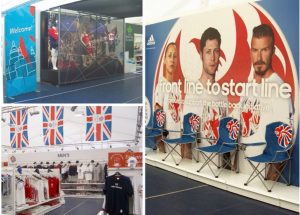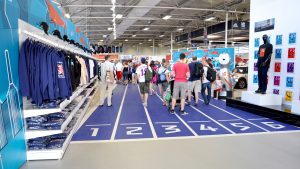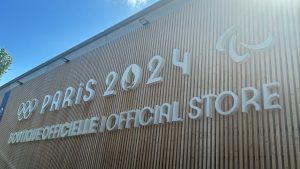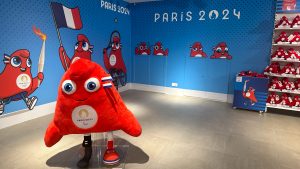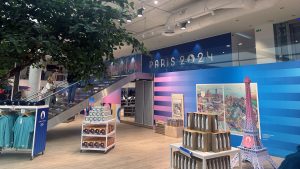London 2012 Megastore
In 2012, rpa:group were pitched to create the retail environments for the London 2012 games, which included the 40,000sqft megastore in the Olympic Park in Stratford, which accommodated 65,000 customers a day. All areas of rpa:group’s expertise were set to work to design and deliver in excess of 100,000 sq. ft of retail space, which aside from the megastore also included Kiosks around the UK and the ‘Pop-up’ shop in Hyde Park, the largest pop-up store in the world at the time.
The remarkable thing about the retail environments created for the London 2012 games were that they were so sustainable, in that most materials used to construct them were able to be completely recycled after the event. It was encouraging to see that the sustainable legacy we helped create for the 2012 Olympics has been replicated in Paris.
Paris 2024 Megastore
Located right in the middle of a roundabout, but still offering lots of space to browse and located next to The Place de la Concorde, the Paris Olympic megastore has been built to accommodate thousands of tourists a day. Clad externally in wood to add texture, it has a sleek and modern appearance and features the Olympic Rings and the Paralympic Agitos alongside its unique logo, a legendary Mascot of the historic French hat The Phryge and the Eiffel Tower, the city’s iconic landmark. As part of the sustainability statement, all will now be repurposed or recycled, proving that temporary retail environments can be striking and demonstrate creativity, while still being sustainable.
With the London Paris Olympics successfully over, Los Angeles has some big shoes to fill, as the saying goes. It will be exciting to see what progress will be made in the next 4 years and how sustainable design will evolve for the 2028 LA Olympics.


